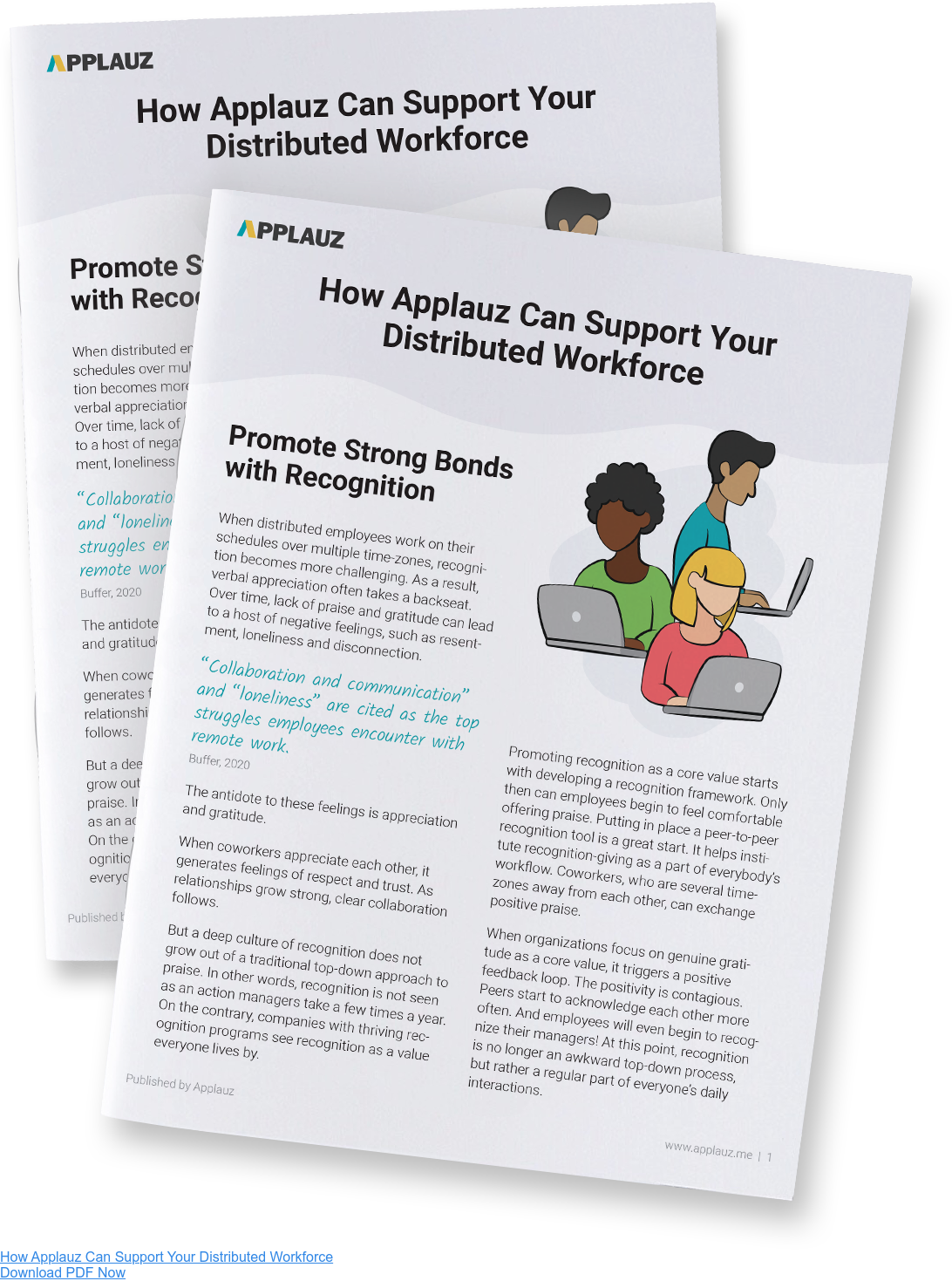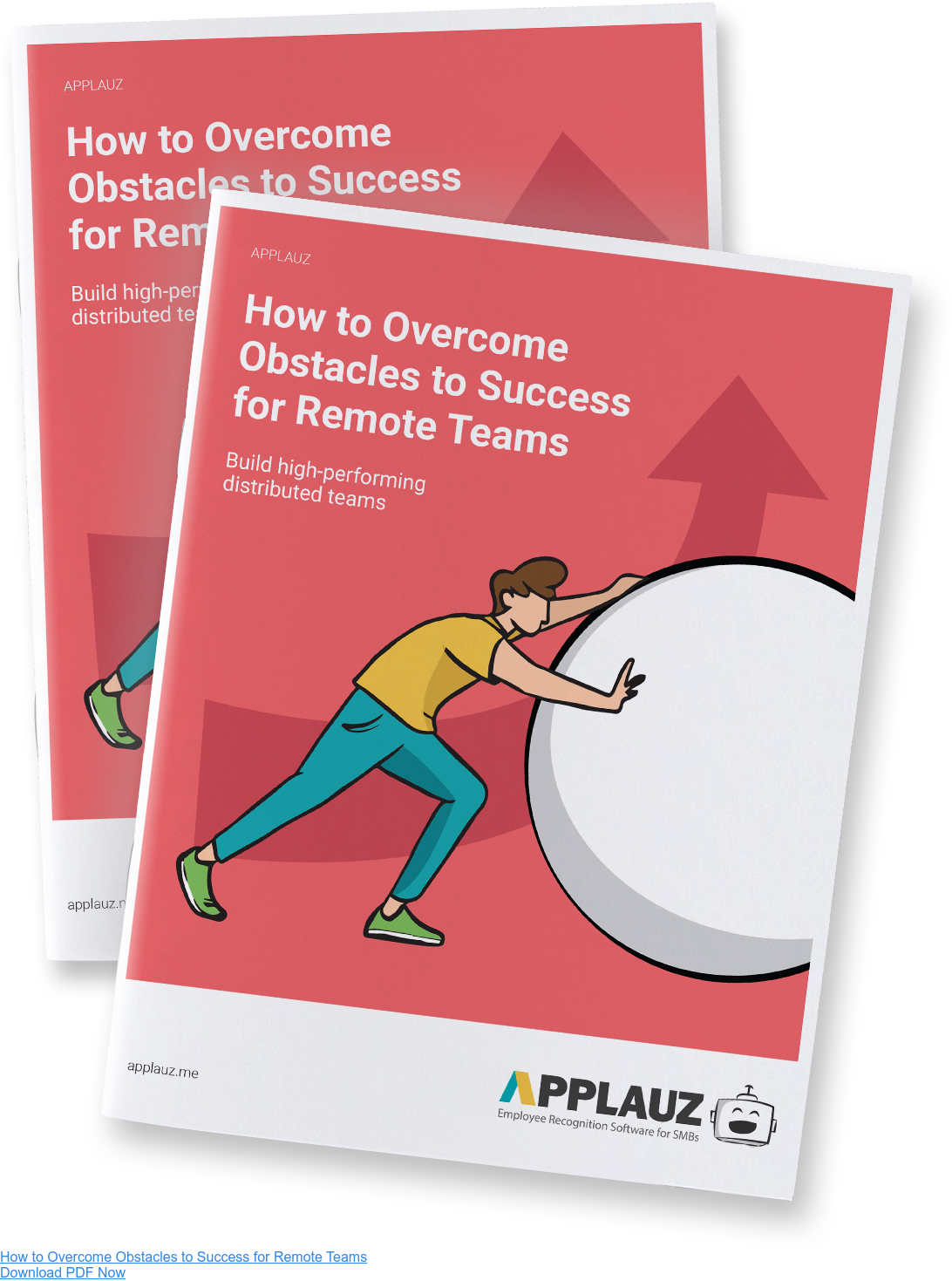"Does remote work actually work?" It can, and it has.
Remote work has built such an impressive track record over many years of successful practice that the days of questioning its feasibility are long gone. For many teams worldwide, it’s now the default. Whether it's a handful of team members, entire departments, or entire enterprises, the capability to thrive in a fully distributed, remote setting has been demonstrated time and time again.
Moreover, we are witnessing a transformative wave where technology, hiring practices, infrastructure, and collaboration tools are all integrating and evolving to facilitate remote operations. This convergence is not just adapting to the remote revolution; it is actively empowering remote employees, solidifying the future of work as one where distance is not a barrier but a tangible catalyst for productivity and success.
What stands out is that the embrace of remote work culture extends beyond being a response to the pandemic; it has evolved into a fundamental aspect of life for employers and employees alike.
 Remote Work: Weighing the Pros and Cons
Remote Work: Weighing the Pros and Cons
For employers, the traditional notion of hiring based on geographical constraints has undergone a lasting transformation, as they are now recognizing the myriad advantages of ethically hiring individuals from any corner of the globe. Beyond tapping into skilled talent and fostering a diverse company culture, they are opening doors to potential revenue streams that might otherwise remain untapped within their home countries. Just imagine: if there are different timezones at play, remote work facilitates coverage 24/7 of their operations, which has tangible benefits for different facets of the company, such as Sales or Customer Support.
For employees, working from home seems like the perfect solution to many traditional workplace issues. For example, remote work helps overcome barriers to productivity like noisy offices, long commutes, and more, providing workers with a better work-life balance.
In a study conducted in 2020, it was also discovered that remote work was linked to a decrease in both psychological and physical stress responses, irrespective of alterations in job stressors, social support, sleep disturbance, and total sleep time.
But, a crucial point to remember is that remote work is still work. Unfortunately, remote work brings along its unique set of challenges, and recognizing the right balance between the drawbacks and benefits is the key. It's your best bet at forging an effective remote team that checks all the boxes: powerful collaboration, high-performance outcomes, and supportive work culture in the digital era.
By approaching remote work with a pragmatic mindset, managers can anticipate issues and truly create an environment built for greater performance and productivity. Ultimately, the question we should ask isn't: "Is working at the office or home better?" The truth isn't so black and white. After all, the remote work model's success depends on many variables, such as occupation type, industry, and individual preferences.
The better question managers should be asking is: "How does remote work benefit our teams, and how does it create challenges, and how can we offer customized solutions to facilitate a flexible work environment?"
Working from home seems like the perfect solution to many traditional workplace issues. For example, remote work helps overcome barriers to productivity like noisy offices and other distractions and provides employees with better work-life balance.
But, a crucial point to remember is that remote work is still work. As a result, it shouldn't be considered a cure for every engagement issue.
Remote work comes with its own set of challenges and issues, and acknowledging this reality is the first step to setting up your remote teams for success.
Approaching remote work with a pragmatic mindset allows managers to anticipate issues and create an environment built for greater performance and productivity.
Ultimately, the question we should ask isn't: "Is working at the office or home better?" The truth isn't so black and white. The remote work model's success depends on many variables, such as occupation type, industry, and individual preferences.
The better question managers should be asking is: "How does remote work benefit our teams, and how does it create challenges."
The perk everyone wants the option to have
Fueled by modern technology, many organizations can now set up a technological infrastructure allowing employees to carry on their responsibilities and duties from a home office.
Even before the 2020 global pandemic, statistics confirm the demand for remote work is a growing trend in North America.
According to Buffer's 2023 State of Remote Work report, 91% of survey participants expressed satisfaction with remote work, highlighting flexibility as the primary advantage.
As per Upwork's 2023 projections, approximately 32.6 million Americans, constituting around 22% of the workforce, are expected to engage in remote work by 2025. This forecast indicates an ongoing and incremental transition towards remote work setups.
Bottom line: nearly every employee in the U.S. wants the option to work remotely.
Are remote employees more engaged?
At this point, employers know that remote work is a highly sought-after perk.
However many organizations are still reluctant to implement these policies. Questions of trust, productivity, motivation, and communication, are on the minds of all supervisors. While these concerns are valid, we see that the most significant trade-off for employers is higher engagement.
A recent Gallup report How Coronavirus Will Change the 'Next Normal' Workplace sheds light on this question; the report explores the relationship between employee engagement and remote work policies.
The investigation shows that organizations offering flexible remote work options have the highest employee engagement.
In other words, obligatory remote work doesn't generate higher engagement, flexible remote work options do.
That said, let's examine the challenges of remote work. This way, you can smoothly navigate this new reality, and set your teams up for success!
Struggles of remote work
A recent New York Times article, Farewell, Office. You Were the Last Boundary Between Work and Home, explores how traditional office settings play an essential role in worker happiness and engagement.
The author states that, despite the expected perks of remote work, blending work and home is harmful to employees' mental well-being. She warns the loss of our "office identities," and social relationships will have a significant long-term impact.
Other reported shortcomings of working from home come up time and time again:
- Lack of camaraderie and social interactions
- Loss of "work identity."
- Communication difficulties
- Lack of work-life balance
- Loneliness
- At home distractions
- Pressure to always be plugged in
Remote work is often presented as a solution to the work-balance conundrum.
But recent reports show the reality might not be so clear cut after all. For instance, most respondents in Buffer's State of Remote Work report stated that "unplugging after work" is the biggest challenge in working from home.
In other words, keeping a healthy work-life balance is still an issue!
A recent Bloomberg report further supports this idea. The author grimly states, "America's always-on work culture has reached new heights."
The report found that one month into the pandemic, "about 45% of remote workers said they were burned out."
What can we learn from this? Promoting work-life balance is still important, even while employees work remotely.
In addition, promoting work-life balance starts with acknowledging each employee's unique environment - for instance, some employees live alone. In contrast, others live with a larger group or family. In short, each employee has their work-life struggles.
Managers must be aware of their workforce's unique situation if they wish to build smart, tailored strategies to keep remote employees engaged.
Positive aspects of remote work
Remote work is appealing to busy, modern workers in many ways.
A whopping 99% of respondents in Buffer's State of Remote Work report said they would like to work remotely "at least some of the time" for the rest of their careers.
Working from home boasts many great benefits:
- No commuting
- Flexible schedule
- Being able to work from any location
- More time with family
- Fewer distractions
- Higher productivity
Modern workers are busy balancing the many demands of life, such as taking care of running a home and spending time with loved ones. Not to mention, investing time in their well-being with hobbies and personal pursuits.
It's clear: Working from home allows for more freedom and autonomy. But, as mentioned before, it's an imperfect solution.
This arrangement cannot be considered the "new normal" until companies address a few critical gaps, such as communication.
Remote work brings positive change, offering flexibility and effectively reducing discrimination.
Embracing it allows companies to cultivate inclusivity and equity, playing a crucial role in bridging gaps for parents and individuals with disabilities by minimizing biases present in traditional offices. This virtual workspace fosters a more supportive and welcoming professional environment for diverse talents.
 Best Practices for Engaging Remote Teams
Best Practices for Engaging Remote Teams
Take a moment to think about the aspects of your job that make you feel happy and engaged.
Most people can identify several areas of their work environment they are satisfied with. And likely a few that need improvement as well. No job is perfect!
The point is: There is no magic, singular formula for employee engagement.
As we can see from this brief thought experiment, several elements of the work environment influence happiness and engagement. We have isolated the most important ones:

|
|
Pro Tip: If your goal is to build an employee engagement strategy, start drawing up a plan and coming up with specific initiatives to improve each area.
That said, in a virtual workplace, the critical areas of employee engagement endure.
What makes employees feel fulfilled and happy at the office is the same as when they work from home.
But, when it comes to remote work, specific areas of engagement need more attention than others. Let's take a closer look...
Autonomy & Empowerment: The key to productivity
The productivity levels in remote work models can vary significantly. According to a Gallup poll, 35% of remote employees feel more productive when working fully remotely, possibly due to factors such as reduced commute times and fewer in-person distractions.
However, a recent study by the National Bureau of Economic Research (NBER) suggests a different perspective. It found that workers randomly assigned to full-time remote work were 18% less productive than their in-office counterparts, either taking longer to complete tasks or accomplishing less.
This disparity underscores that productivity is not a straightforward metric, and each team adapts differently to remote work. It's probable that your team's productivity measures will shift in one direction or another.
One thing that contributes to this lack of productivity stems from slow communication from remote workers.
In an office, it can be easy to stop by someone's desk to follow up or bring your colleague's attention to an essential task by flagging them down in person. But at home, these actions become much more difficult.
Some key strategies can help to clear up communication issues and overcome this common barrier to productivity.
1) Establish communication expectations for everyone
For example, set clear directions on availability. During designated time slots, for example, 10 am-4 pm, employees must be available to their colleagues. Also, make sure to establish clear expectations regarding response time delays. Ensure colleagues are respecting each other's work with acceptable delays in responding.
2) Put in place the right tools
A strong tech stack consisting of communication and management software is essential to your remote teams' success. Investing in the right apps for your remote teams is vital. At a minimum, ensure you have the essentials: a video conferencing tool, a chat app, and a project management tool.
3) Consider offering greater autonomy and empowerment
When managers grant more power and authority to employees, it accomplishes two important things. First, it reduces barriers to productivity and streamlines the delivery of the work. Second, employees with more authority hold a greater sense of responsibility and ownership over their tasks.
A lack of perceived power and control over circumstances is a significant driver of employee disengagement. Conversely, imbuing employees with a strong sense of accountability often results in higher employee engagement. In other words, it's a win/win.
Goals & Alignment: Set communication expectations and check-in
In the office, we take for granted how often we casually check in with our colleagues and teammates. However, it’s a double-edged sword, as sometimes it’s almost too easy to check in with colleagues.
For example, if a teammate sees you in the break room, they might ask you what you're currently working on. Fleeting interactions also help managers take the pulse of employee sentiment; it can be quite obvious if someone is having a bad day when you are in the same room. At times, someone might feel more comfortable cornering you and wanting to socialize at moments when you need to get back to your desk
Bottom line: momentary communication and casual check-ins with purpose keep teams and people aligned.
Unfortunately, there is no such thing as a passive or chance check-in with a colleague or employee when your teams work from home. Communication and alignment can only be pursued actively. This can be seen as a positive if you’re intentional about your check-ins.
As such, active check-ins, and communication is key to keeping your remote teams aligned. Consider using pulse surveys to get a broader sense of the sentiment across your organization.
Checking in shouldn't be unplanned or spontaneous - some level of structure and expectations should be set from the beginning.
Carve out predictable times of day to touch base. Consistency is key here.
This way, your employees can plan their intensive "deep work" around those time slots.
Micro-managing has been an issue with both in-person work and remote. Finding the right balance is imperative. This brings us to an interesting question: How often should managers and employees be communicating?
While there are no steadfast benchmarks, the frequency depends on the nature of your work (i.e. do you work on weekly quotas or monthly or quarterly goals) and the amount of support your employees require. At a minimum, consider a bi-weekly video chat or call to make sure everyone is on track towards their objectives.
Recognition & Rewards: Respect holds teams together
Genuine employee appreciation and gratitude are among the most critical drivers of employee engagement.
Think about friends or family members who criticize their jobs or managers. These common complaints are often heard: "My work isn't recognized" or "I don't feel my manager appreciates my effort."
In remote work environments, expressing gratitude and appreciation continues to be vital. These positive interactions foster trust and appreciation between colleagues. A distributed workforce cannot thrive without mutual respect and encouragement.
How can managers and colleagues make recognition a priority when working from home?
There are several unstructured methods you can initiate, such as:
- Send a weekly recognition email highlighting the key achievements of the week and a personal shout-out to the employees involved.
- Host a weekly all-hands meeting and take the last ten minutes to offer recognition to employees who demonstrated excellent work ethic and performance. Open up the floor for others to provide recognition to their peers as well!
- Create a recognition channel (in Slack or any other chat app). The channel is dedicated to employees offering words of appreciation and gratitude for their mutual efforts and hard work.
These unstructured methods are a cost-effective and easy way to prioritize formal recognition and appreciation. With time, you will notice that regular gratitude and appreciation will do wonders for team happiness and morale.
That said, it’s difficult to be consistent with these ad hoc methods. Managers get busy and forget to send that weekly email. In short, these ideas are a good short-term fix, but not a viable long-term solution.
If your remote work arrangements are permanent, consider investing in an employee recognition tool, such as Applauz.
An official recognition tool will legitimize your efforts. Offering recognition and praise will become second nature at work and an integral part of your workflow.
Pro Tip: Employee recognition programs, like Applauz Recognition, give organizations a social-media-style Employee Newsfeed where everyone can offer each other public recognition and praise.
Work-life balance: Avoid the “plugged-in” lifestyle
Working from home seems like the perfect solution to the work-life balance problem.
But recent research and insights from the largest "work-from-home experiment," have stepped in to challenge this idea.
The flexible nature of remote work is a double-edged sword for many employees. Remote work arrangements allow for flexibility in scheduling. But the reality is that employees often feel pressure to always be "plugged in."
"Unplugging after work" is cited as the top challenge for remote employees, according to Buffer's State of Remote Work report.
The primary goal for managers is to help employees set healthy work-life boundaries.
First, don't expect employees to respond to messages and emails during late night hours. For the employees who are always plugged in, don't punish them for it, but don't publicly praise them. When supervisors celebrate employees who are always plugged in, it can unintentionally set harmful expectations and pressure.
People with families or those caring for sick loved ones can't meet the same standards. If these employees are otherwise achieving their quotas or performance goals, they shouldn't feel wrong about setting healthy work-life boundaries.
Second, managers should avoid measuring performance and productivity with input (i.e. hours worked). Instead, a manager working with remote teams should be measuring output to gauge productivity—more on this idea in the next section.
.jpg?width=750&name=bigstock-Top-View-Young-Woman-Freelance-348713074%20(1).jpg) How to Monitor and Manage Remote Employees
How to Monitor and Manage Remote Employees
Ask yourself this: Are you always watching your employee's screens at the office? Probably not.
So why would you install surveillance software on your employee's computers?
Supervisors must put systems in place to ensure employees are doing their jobs - total freedom is not the goal here. But neither is micromanagement and intense monitoring.
Time-based monitoring with software can be damaging to the employee-manager relationship. Not to mention, motoring hours tell managers very little about the bottom line - employee output and quality.
The good news is that better methods exist to guarantee your teams are getting the job done.
Let's explore some practical and balanced solutions (that don't involve intrusive time or screen tracking) that are proven to keep employees productive and on task.
Re-frame your idea of productivity
In recent years, modern, non-industrial work environments have experienced a widespread re-evaluation of what it means to be productive.
As a result, many organizations are choosing a more balanced view of workplace productivity.
Before exploring these ideas, let's break down how one would typically measure productivity:
- Input (number of hours present at work)
- Output (what is produced)
Work environments traditionally rely more on input to measure productivity; keeping close tabs on how early employees arrive, breaks, and how many late nights employees stay clock in.
The assumption is that the more hours an employee is present at work, the more productive they must be.
But in the context of workers who perform creative, high-value tasks, the relationship between the amount of time worked, and productivity is not always a straight, positive line.
Simply put, more input (i.e. hours worked) doesn't always yield higher output - eventually, the law of diminishing returns kicks in.
In the remote work environment, measuring employee input can be a problem; unless you are using time-tracking software, the precise number of hours worked can be difficult to pin down.
As a result, setting remote teams up for success means shifting focus on tracking employee output.
Organizational experts agree
A range of recent studies and research supports tracking productivity with output.
In a recent CBC report, professor at Western University Chris Higgins shared insights from his research. For workers who perform non-routine and high-value tasks, he found that tracking output instead of hours has a positive impact on productivity.
As experts unpack these ideas, it becomes clear that the nature of the work plays an important role.
A Medium article The Two Best Strategies To Measure Your Productivity highlights a necessary distinction between output and input:
- Tracking output as a measure of productivity is best suited for predictable tasks—for instance, a content writer who produces ten articles per month with little help from colleagues.
- Tracking productivity with input is best for unpredictable tasks. For example, an engineering firm that builds a few complex machines per year and requires work from many specialists such as automation, mechanical, and electrical engineers.
Focusing on output is ideal for workers who perform high-value, predictable tasks and assignments. Think of marketers, accounting, recruiters, developers, inside sales, writers, entertainment production, etc.
Experts are also using this new approach to productivity to justify a shorter workweek.
For instance, Microsoft Japan tested a 4-day workweek while paying their employees the same as if they had worked the full five-day week. And productivity rose by 40%!
Tips for managing tasks for remote teams
You don't need to jump onto the bandwagon of these highly progressive methods just yet. A 4-day work week is difficult to justify for most businesses.
At the very least, start by embracing these new ways of approaching work and productivity by shifting away from tracking hours "clocked in" and focusing on employee output and quality instead.
Some key strategies to better track and manage employee output:
- Promote accountability with an end-of-day report or bi-weekly check-in. Touch base with your employees to ensure you know what they are working on, and that they are working towards their goals.
- For companies that deal with short-medium term projects: establish assignments, tasks, and projects with deadlines. Use a shared calendar or project management app.
- For companies that need to meet short-term goals, establish daily quotas or weekly quotas, and track output with a shared tool
In summary, placing too much emphasis on input reduces employees to mere resources, as a means to an end.
On the other hand, viewing and evaluating employee output is a more flexible and humanistic way of approaching work.
Psychologically, this approach gives employees a sense of individual ownership for the quantity and quality of output. Ultimately, this approach helps to elicit a sense of autonomy and accountability, which is critical in generating employee engagement.
With that said, if you need to implement time-based tracking or screen monitoring, follow this advice from organizational psychologist Mac Quartarone. He explains in a report for Vox; employers should be 100% transparent about what they are virtually monitoring. Being transparent ensures the lines of communication are open, and employees know what they are accountable for and why. The accountability will also fortify team spirit and help others see how they can collaborate together on projects.
 Team-Building Activity Ideas for Remote Teams
Team-Building Activity Ideas for Remote Teams
Organizations can't expect employees to maintain camaraderie and bonds with coworkers on their own. They will need to create a virtual environment that mimics the real world and enables spontaneous interactions and connections.
If digital communities (built of people who have never even met) can thrive online, so can your company's remote work culture.
So even though your workforce is distributed across different locations, you can still get together and connect virtually. Many online games and activities are available for work teams to bond and share a laugh.
Some activities are entirely free, while others require a small budget. Whatever the size of your team or budget, there is an activity that your team will love.
Free team-building activity ideas
Getting your remote teams together for a fun and easy virtual activity doesn't need to cost a bundle; it's all about being creative and resourceful. Of course, at the very least, it will require a video conferencing app like Zoom or Google Hangouts. With a conferencing app and a little creativity, you can create a fun activity for your teams to enjoy, for example:
- Virtual Pictionary with a word generator app like Wordraw
- "Two truths and a lie."
- Build your own Jeopardy board
- Play a virtual trivia game
- "Who is it."
- Host a cook-off challenge
Paid team-building activities and ideas
Ice-breaker activities and classic games might be more difficult to host if you're dealing with a larger team. In this case, consider some of the following ideas that will help organize an event for your larger teams.
- Create a custom trivia game with a Trivia maker
- Use Virtual Team Building to help put together your virtual activities
- Check out the Offsite Co for virtual retreats
- Use Quiz Coconut to host trivial events for large teams

 How to Celebrate Work Milestones from Home
How to Celebrate Work Milestones from Home
We are living in a climate where short work tenures are the norm. As a result, it's never been more important to praise employee loyalty.
Acknowledging work anniversaries validates employee commitment. Simply put, it ensures dedication is recognized and not "taken for granted."
Celebrating work anniversaries from home
Even when employees work from home, celebrating milestones like work anniversaries is vital to an employee's sense of happiness and belonging. This will also help harness an environment of recognition and value.
There are effective ways managers can make work anniversaries meaningful from afar
Here are a few tips!
1) Send a personalized letter or card by mail
You might not have the budget or time to deal with buying anniversary gifts or signing up for a Years of Service Program; that's OK too. The most important thing to remember is that a gesture of authentic recognition - big or small - is always welcomed.
Sending a card or letter is one of the best ways to recognize work anniversaries, especially if you're on a budget. It's a quick and easy way to show you care.
Remember: make it personal and meaningful. Highlight what makes this employee special and valuable to your team. Sending a recognition letter in the mail will undoubtedly exceed your employee's expectations. It is the highest demonstration of effort and thoughtfulness a manager can make.
Pro Tip: With a Service Awards program, managers are automatically reminded of work anniversaries, so you'll never forget another celebration.
2) Send a monthly anniversary email
A group celebration email is a time-efficient way of recognizing work anniversaries. Send a monthly email to your team to highlight which employees are celebrating an anniversary that month. Be consistent and send the email at the same time every month.
Take the recognition up a level by making it personal and showcasing each employee's greatest achievement. If you can dedicate a small budget to celebrate anniversaries, consider sending your employees a gift, especially if it's for a significant milestone. There are plenty of gift and reward ideas your employees will love.
3) Seek out a Years of Service provider to help with logistics
If your team is small, celebrating anniversaries is straightforward, with letters and small gifts as described above. But as an organization grows, celebrating and remembering work anniversaries will become a time-consuming endeavor.
For instance, with large teams, there is a lot of guesswork. Managers must think about what employees will enjoy as a gift, and perform administrative work, such as remembering work anniversaries and sending out messages on time.
Businesses that specialize in Years of Service celebrations, like Applauz, can help simplify work anniversaries. Work anniversary programs help by providing an online gift catalog where employees can shop for their anniversary gifts and have them shipped directly to their homes.
 Remote Work: Treading A Fine Line Between Productivity & Convenience
Remote Work: Treading A Fine Line Between Productivity & Convenience
In the end, the essence of remote work culture will differ significantly across organizations and teams, reflecting the unique touchpoints of engagement, productivity, and collaboration that managers personally establish. What proves effective for one team may not necessarily yield the same results for another, and vice versa. Moreover, this is an ongoing process that requires adaptation - both to emerging technologies in the market and the unique skills and qualities of the talent you bring on board.
How are you fostering an environment where remote workers feel empowered to make independent decisions while maintaining optimal productivity? In establishing long-term goals for your employees, how can you offer clarity without resorting to micromanagement? What steps are you taking to promote open, positive, and friendly communication among team members, ensuring a sense of inclusion and value for everyone?
While remote work arrangements have become ubiquitous, there are numerous pitfalls to avoid. Rather than resisting the emerging norm and risking lagging behind competitors, businesses must reshape their operational framework to accommodate remote or — at the very least — hybrid work structures. These structures not only facilitate innovation and team collaboration but also enable the establishment of a sense of community and connection. The key is to focus on what works best for you, the current structure, and the employees and culture you want to have. If it fits into your culture and overall strategy, there are many positive reasons to adopt either a work-from-home model or a hybrid approach that’s more flexible.
 Applauz on SourceForge: Effective Employee Engagement Software
Applauz on SourceForge: Effective Employee Engagement Software







